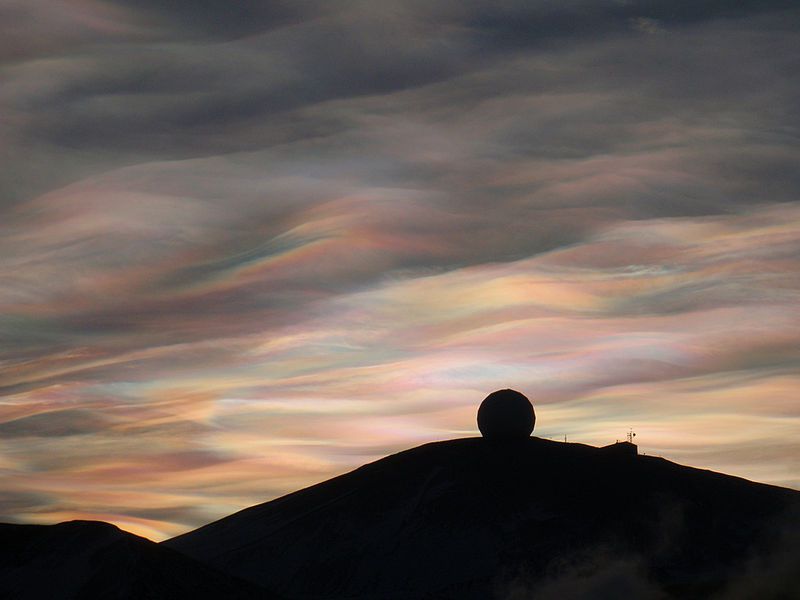-
 Ovariectomy
Ovariectomy
-
 Ozonator
Ozonator
-
 Flagellum
Flagellum
-
 Wave velocity
Wave velocity
-
 Villi
Villi
-
 Whopping cough
Whopping cough
-
 Neoteny
Neoteny
-
 True coordinates
True coordinates
-
 Atrophy
Atrophy
-
 Cryovolcanism
Cryovolcanism
-
 i-Link/S400
i-Link/S400
-
 Proline
Proline
-
 Articular cartilage
Articular cartilage
-
 Giant planet
Giant planet
-
 Elastin
Elastin
-
 POP
POP
-
 Oligotrophic
Oligotrophic
-
 Western corn rootworm
Western corn rootworm
-
 Exudation
Exudation
-
 Webcast
Webcast
-
 Cervical vertebra
Cervical vertebra
-
 Stamping
Stamping
-
 Planum
Planum
-
 Snuppy
Snuppy
-
 Ultraviolet
Ultraviolet
-
 ASN. 1
ASN. 1
-
 Biological pollution
Biological pollution
-
 Methyl bromide
Methyl bromide
-
 Thalassaemia
Thalassaemia
-
 Arthropod
Arthropod
Noctilucent cloud
Noctilucent clouds, also called nacreous clouds, form in the upper part of the stratosphere and in the mesosphere. The word 'noctilucent' comes from the iridescence of the clouds which is reminiscent of mother-of-pearl. This iridescence is particularly noticeable when the sun is a few degrees below the horizon.
Floating at an altitude of 80 kilometres, noctilucent clouds have the particular quality of continuing to shine above landscapes otherwise plunged into darkness. They were observed for the first time in 1885 by Robert Leslie the amateur astronomer. At the time people believed that these clouds were caused by the Krakatoa Volcano eruption. Today, as noctilucent clouds appear increasingly frequently, they are readily linked to global warming and human activity.
The AIM satellite (Aeronomy of Ice in the Mesosphere) planned to be launched late 2006, will study how noctilucent clouds are formed.
 Noctilucent cloud
Noctilucent cloud
Latest
Fill out my online form.



